-
Posts
153 -
Joined
-
Last visited
Content Type
Profiles
Forums
Blogs
Gallery
Events
Store
Posts posted by Jonathan Hopkins
-
-
Thank you, Mervyn! I am glad the review was of help. I have known Richard through online fora since 2006 and I have had the pleasure of meeting him in person. He is the sort of person who is a font of knowledge, and after speaking with him one thinks, "He should write a book!" And now he has!
0 -
I have added links in the book reviews section. Thank you!
0 -
-
Mervyn,
It has been a while, hasn't it? My absence is due to a few factors; a cross country move, being a member of too many internet for a and getting a bit burned out, and I have not been actively collecting for a few years. But all is well with me, thanks!
Richard's book is of a similar scale as Brian Robson's book, but with a focus on cavalry swords. As far as I know there are two distributors of the book--Richard himself through his website, and Stuart Mowbray in the USA.
Jonathan
0 -
I just wanted to alert members to a new book by Richard Dellar; The British Cavalry Sword 1788-1912: Some New Perspectives. It is a very well researched and high quality publication and it is generously illustrated with color photos. I highly recommend it! Here is a link to the book's website: http://thebritishcavalrysword.com/
0 -
I agree on all points, Brian. I will post this in the lost/stolen section, too (I just noticed it
 ).0
).0 -
A large collection of British military swords from the Victorian period through WWI was recently stolen. All are Wilkinsons and should be easy to spot based on the serial numbers. Here is a link to a complete list and other details:
http://www.tokenpublishing.com/news.asp?gid=14&nid=776
0 -
Mervyn,
I have not been able to find a match. Admittedly, my post-1900 sources are thin on the ground. Perhaps a member with Army Lists of the period can help.
Jonathan
0 -
It looks like some Dutch and Danish hilts c.1800. I do not think it has Indian origins.
0 -
Not my area at all, but it looks like a Continental sword from c.1800 give or take.
0 -
Mervyn,
The 1st VB may have had its own special pattern, or the officer may have transferred to an artillery unit or the ASC and elected to simply have his sword re-hilted rather than endure the expense of a completely new sword. Have you looked into the initials at all? I will see what I can find...

The cypher looks like the double reversed initials ER, for Edward VII, so this is a post-1901 sword.
Jonathan
0 -
Mervyn,
It has been a slow year for me, unfortunately.
Jonathan
0 -
Mervyn,
Not my area of specialty at all, but it looks more like a French Mle. 1845 infantry officer's sword, or possibly a Belgian Mle. 1850 (based on the French Mle. 1845). I can't make out the etching on the blade--what does it say? Are there any other markings on the sword?
Jonathan
0 -
I don't recall if the alleged complaint is covered here, but for further reading on the 1796 patterns I highly recommend the articles by Richard Dellar which are online here:
http://www.swordsand...ageNum=1&aID=10
It is possible that you sword (and mine) were actually assembled in England with English-made hilts and German blades.
0 -
Mervyn,
I think you may have a plain officer's sword (or the decoration has been polished away). Troopers' swords did not have wire binding on the grips and they tended to have plain half-circle ears on the back strap. This would also explain the lack of government markings.
I also have a plain officer's P1796 LC sword (scabbard is associated and not original to the sword) marked J.J. Runklel Solingen on the spine:


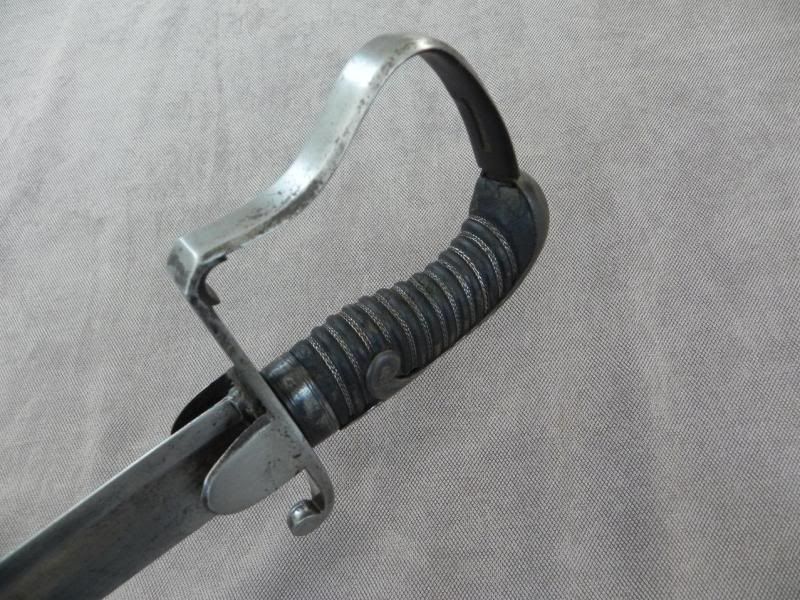
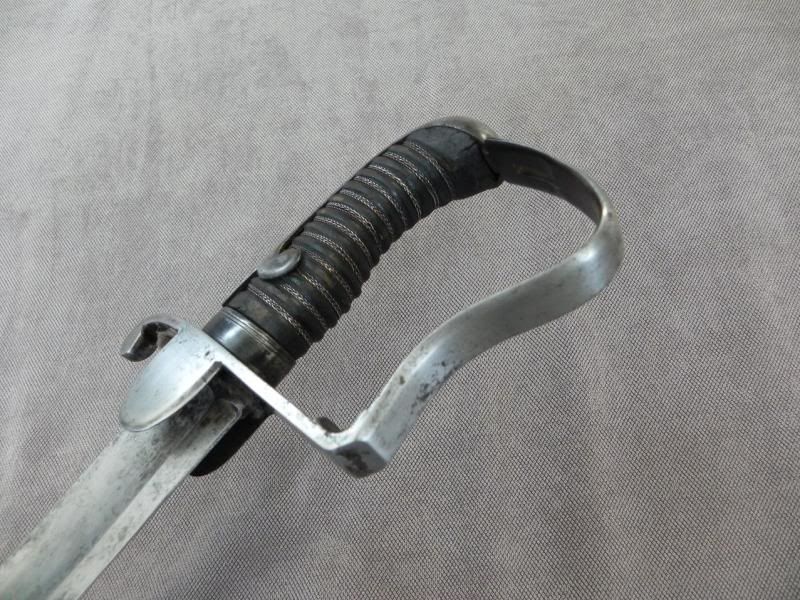
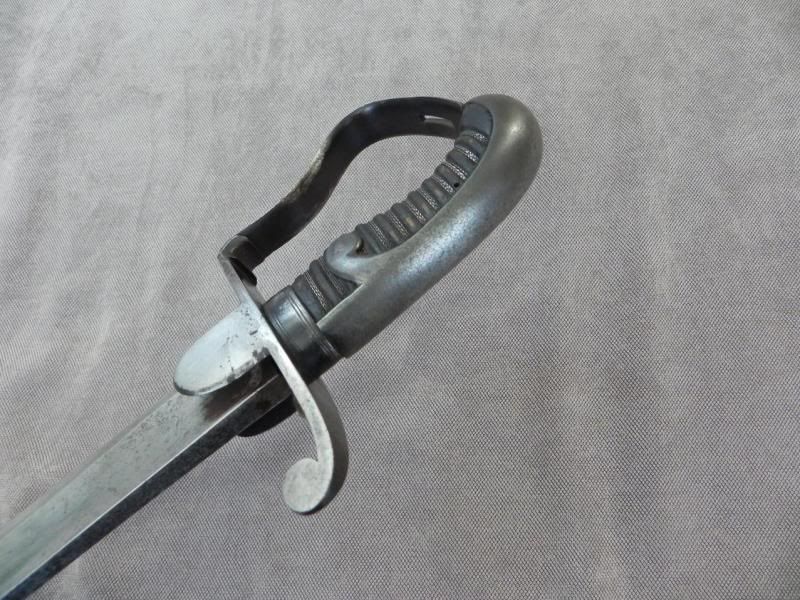
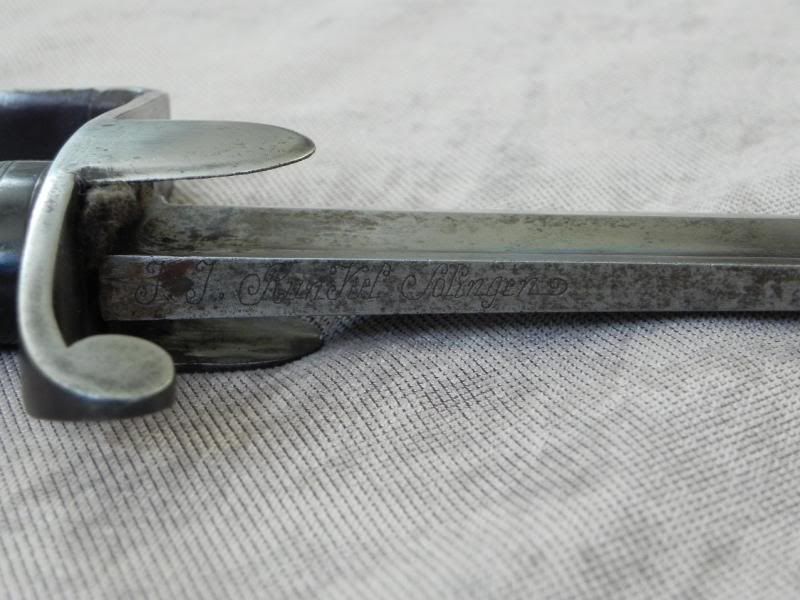 0
0 -
Date: Pattern 1796 (Early 18th Century)
Really stunning sword, Cathey & Rex! Best of luck pinpointing the original owner. I think you meant to type "early 19th century" in the description. ;)
0 -
If you are referring the whatever is hanging from the scabbard ring, then I can't comment on it. Do you have a close-up? I do not know much about Italian edged weapons, but I believe that this model was used as late as WWI (so 1871-1918). You may want to Google "Italian 1871 cavalry sword" to find additional information and photos, or you could check the database at OldSwords.com.
Jonathan
PS--It could also be a similar, but later sword, the Italian M1909.
PPS--This information might also be of use:
CALAMANDREI C., Storia dell' Arma Bianca Italiana, Firenze, Italy, 1999.
http://users.skynet.be/euro-swords/IT1873.htm
0 -
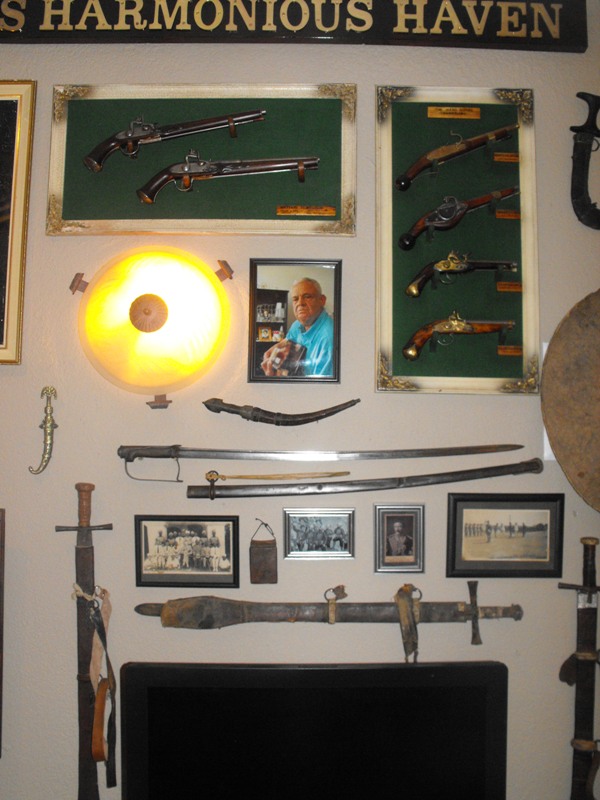
Many foreign weapons were captured by the Sudanese forces on battlefields where they defeated their enemies. The sword hanging close to the light is of European origin but I have not been able to positively identify it. The sword below it is a battlefield pickup from Omdurman.
You may have since identified this sword, but just in case you have not, it is a battered Italian M1871 cavalry trooper's sword.
0 -
Cathey, the sword of Lt.-Col. McCall is to die for. I absolutely love it. I really need to add a Crimean War period sword to my collection. Thanks for posting!
Jonathan
0 -
Mervyn,
Nice one--the condition is great. It is unfortunate that there is no maker or outfitter name and that the proof disc is plain. Also, one small correction--it is a Pattern 1897. Keep the swords coming!

Jonathan
0 -
Mervyn,
Yes, I am a moderator at victorianwars.com . I am looking forward to seeing your swords!
Jonathan
0 -
Nice dirk, Mervyn! I hope you can ID the midshipman and share a bit of his story with us.
0 -
Mack,
Mervyn is spot on. It is a British Pattern 1845 Infantry Officer's Sword. The Pattern 1845 Infantry Officer's Sword is similar to its predecessor, the Pattern 1822, in that both patterns share the same hilt design--a brass "Gothic" hilt with folding inboard counterguard. The major difference between the P1822 and P1845 is the blade; the P1822 has a pipe back blade and the P1845 has a fullered blade. In 1854 the hinged inboard counter guard was discarded in favor of a permanently fixed guard, and thus the Pattern 1854 Infantry Officer's Sword. Despite the fact that the brass hilt was thought to be weak and inadequate, the Pattern 1822/45/54 swords remained in service for the vast majority of the Victorian period, and were not superseded by another pattern until 1895.
Since the hinged portion of the guard was discontinued in 1854 we can date your sword to the period 1845-54 (although some swords with hinged guards were still sold after 1854). Farra would have been a retailer of some sort--a tailor or military outfitter. At this point in time there were not that many makers in England. Mole and Wilkinson were the largest, with Pillin, Reeves, and others making up the remainder. Farra is not mentioned in Bezdek's Swords and Sword makers of England and Scotland nor the "Makers" section of www.oldswords.com.
If you can post a photo of the brass proof disc I can probably tell you who made the sword. Also, photos of the blade decoration would be useful. Are there any family crests or initials on the blade? The original sword knot is a very nice thing to have and the patent leather hilt liner is very rare! Well done!

Jonathan
0 -
I do not know much about French swords or briquets in general. I do know that they were not meant for mounted troops. They were issued to the infantry, and were used throughout the 19th century by many European countries. Here is some information on French poincons (the small round stamps found on French swords):
http://klingenthal.chez.com/presentation_marquages.htm
Having posted that information, I am not sure that your briquet is French. You may want to have a look through the various examples at OldSwords.com to see if you can find any matches. Sorry I can't be of more help.
Jonathan
0



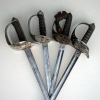
Tercentenary Sword
in Swords & Edged Weapons
Posted
I am not generally a fan of Wilkinson's late 20th century presentation or commemorative swords, but that one looks very nice. Thank you for sharing!